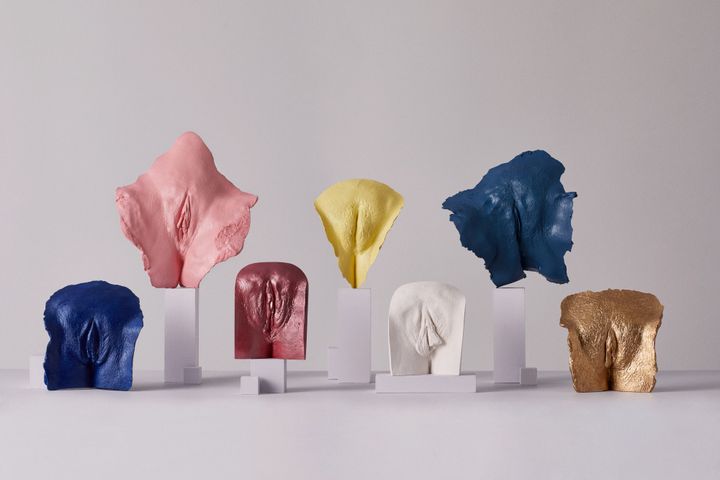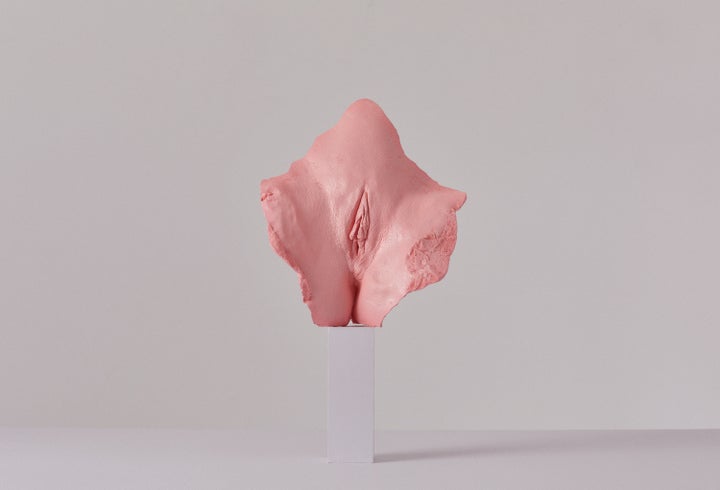Over half the population has one, yet we’re still really, really confused about vulvas.
Almost half (46%) of 16 to 24-year-olds are not confident they know exactly what a vulva is, according to new research by the period care brand Callaly. So let’s get that cleared up from the start: the vulva is the external genitals, including your labia, clitoris and vaginal opening. The vagina is the bit inside.
But even among those who are clued-up on the anatomy, there’s still a lot of vulva hatred going on. Almost a third (29%) of people aged 16 to 35 have worried about whether their vulva was abnormal, while 40% of 16-24 year olds and 37% of 25-34 year olds wished they had a “neat, symmetrical shaped vulva”.
In addition to this, 22% of 16 to 24-year-olds and 15% of 25-34s have considered changing their vulva themselves, either by cutting or bleaching it, and 13% of 16-34s are planning to have surgery on their vulva. More than half (55%) of 16-24s and 40% of 25-34s agreed there is too much pressure on people to have ‘perfect’ vulvas.
But what even is the “perfect” vulva anyway? Spoiler: there’s no such thing.
To prove it, 10 brave participants have cast their vulvas in plaster, shedding light on how diverse vulvas really are. Some of them have also shared how their relationship with their vulva has changed over time.

“As a teenager, I started looking at porn and it was all white people,” said Rubina Pabani, a 33-year-old podcaster from Margate. “I noticed I had more hair and a different structure, so I immediately thought something was wrong with me.”
Another anonymous contributor added: “I felt so uncomfortable that I wanted to cut my vulva. I remember being sat on the toilet with a pair of nail scissors, ready to cut it off. At the time, when I was 11, I genuinely thought I was the only person who had a vulva like this but there are billions of different vulvas, and there’s nothing to be ashamed of. If we all looked the same, it would be really boring.”

Others supporting the campaign include Lydia Reeves, now 29, who had a distorted view of her vulva due to seeing porn aged 14 and was desperate to turn 18 so she could get labiaplasty. She didn’t end up getting the surgery and now makes body casts of people with vulvas to help them embrace their own bodies.
Vic Jouvert, a non-binary trans man, also took part, after going on testosterone and experiencing ‘bottom growth’. “It’s probably the most trans part of my body,” says Vic. “I mean, my whole body is trans, but I like that this part of my body is different from what you were taught your genitals should look like.”
Ginny, 24, who posts under @MyDisabledSexLife, is another ambassador, and wants to remind others that disability shouldn’t automatically be an obstacle to sexual pleasure.

Jody Elphick, who’s Callaly’s “vulva diversity campaigner”, hopes the photos will help others to gain a new appreciation of their vulvas.
“We knew this conversation was long overdue, but it wasn’t until we got the results of our research back that we realised how serious the problem is,” she said.
“For such a high proportion of people to be walking around thinking there is something wrong with their perfectly healthy vulva is nothing short of a crisis. We hope this campaign will help dismantle the culture of shame and secrecy surrounding vulvas, spark frank conversations, and encourage improvements in the education system so that future generations can feel more confident in their own bodies – whatever shape, size or colour their vulva happens to be.”